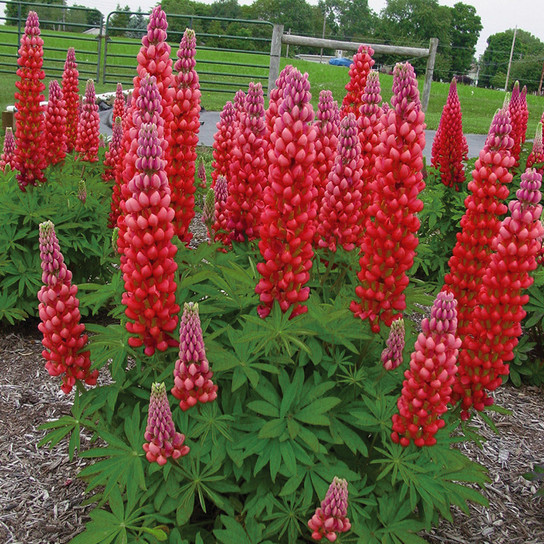
Lettuce Plants
Uses:
- Veggie & Lettuce Gardens
- Containers, Window Boxes, & Raised Beds
- Small Spaces & Vertical Gardens
Features:
- Colorful Wavy Leaves
- Contains Vitamin C, Iron, Folate and Fiber
- Grows Fast
Sunlight:
- Partial Sun To Full Sun
- At Least 5 Hours of Direct Sunlight
Lettuce is a cool-season vegetable and offers fresh, nutritious greens for weeks. This easy-to-grow veggie matures in about 50 days and grows best in the cool weather of spring and fall. The crinkly leaves range in color from green to purple and red, offering color even when other plants are just getting started. Lettuce has shallow roots and grows readily in containers of all shapes, allowing you to locate it where harvesting is most convenient.
About Lettuce Plants

Butterhead, Romaine, Head Lettuce, Iceberg, Looseleaf
Asia-Tropical, Europe, Africa, North and South America
Edible Plants
Herbaceous
2 - 11 (annual)
Yellow, Blue, White
Spring, Summer
Compact, Upright
Birds, Bees
Cool weather
Some varieties resist bolting & heat
Where To Plant Lettuce In The Garden
Lettuce is a cool-season vegetable that thrives in full sun and well-drained soil. It matures quickly, allowing for multiple harvests in a single growing season. Its crisp texture and mild flavor make it a staple in salads and sandwiches. Additionally, lettuce is low in calories and high in vitamins A and K, contributing to a healthy diet.
In the garden, lettuce serves as an excellent companion plant. Its shallow roots allow it to grow well alongside deeper-rooted vegetables like tomatoes and carrots, maximizing space efficiency. Lettuce can also act as a living mulch, helping to suppress weeds and retain soil moisture. Planting lettuce in succession ensures a continuous harvest and keeps the garden productive throughout the growing season.
Lettuce Care
Plant lettuce in well-draining, nitrogen-rich soil with a pH between 6.0 and 6.8. Space plants 20 cm apart to allow adequate sunlight, enhancing leaf color and nutrient content. Water consistently, keeping the soil moist but not waterlogged, as overwatering can lead to root rot. Lettuce prefers full sun; however, in hot climates, provide partial shade during peak afternoon hours to prevent bolting. Fertilize sparingly, as excessive nutrients can cause rapid, weak growth.
Remove outer leaves that appear worn or slimy, and harvest either the entire head at the base or a few leaves at a time for leaf types. Refrigerate immediately, placing the unwashed leaves in a loose bag to keep them crisp, and use within a few days. Watch out for slugs, snails, and aphids, which can damage tender leaves; regular checks help catch pests early. In hot weather or when neglected, lettuce may bolt and turn bitter, so ensure steady moisture and consider light shade if temperatures spike.
Learn More About Lettuce Plants

Growing Lettuce in Pots
Use a sturdy pot with excellent drainage and a loose, compost-rich potting mix. Sow seeds thinly or plant young transplants, then water consistently to maintain gentle moisture around shallow roots. Position the container where it receives several hours of direct sun but avoid punishing afternoon rays in hotter climates. Snip leaves as they reach a usable size, letting the inner portion keep producing until the plant naturally declines.

Lettuce Companion Plants
Lettuce companions should appreciate cool spring or autumn temperatures, fertile but well-drained soil kept consistently moist, and morning sun with afternoon shade. Sweet alyssum lures aphids away while feeding hoverflies, and spring-blooming lupine fixes nitrogen in the soil and casts just enough leaf shade to delay lettuce bolting when heat arrives. Plant compact tomatoes and bush or trellised cucumbers nearby to shelter the lettuce base and supply a complete “salad bowl” harvest.







